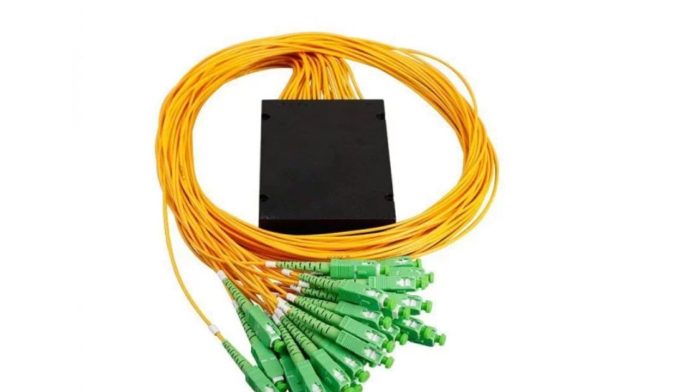An optical device that divides a single incoming optical signal into four separate output signals is called a Fiber Optic Splitter 1×4. The “1×4” designation signifies that the splitter has one input and four output ports. Using technologies such as fused biconical taper (FBT) and beam splitter chips, this device works on the principle of splitting light.
It is possible to transmit identical data streams to multiple destinations at once thanks to the effective distribution of the incoming optical signal among the four output ports. The Fiber Optic 1×4 PLC splitter passive operation which means it doesn’t require external power sources to function is one of its main advantages. This feature enhances reliability and reduces the overall power consumption of the optical network.
How Come It Is Named a 1×4 Splitter?
The designation “1×4” for a Fiber Optic Splitter 1×4 designates its particular configuration, which offers a brief means of communicating its functional attributes. Here, the “4” indicates four output ports, and the “1” represents one input port. In essence, it shows how many channels or paths the splitter can support. This nomenclature adheres to the widely accepted practice in optical networking, where the inputs are denoted by the first number and the outputs by the second.
Uses for a 1×4 Fiber Optic Splitter
The 1×4 fiber optic splitter has the following important uses:
Telecommunications Networks:
In telecommunications networks, fiber optic splitters are widely used to distribute and split optical signals. A single input fiber in a 1×4 splitter can be connected to the main office, and the output fibers can be routed to various locations, including residences, places of business, and other network nodes. With this setup, the available optical bandwidth can be shared effectively, facilitating high-speed voice, video, and data communication.
Passive Optical Networks (PONs):
Passive optical networks, commonly deployed in fiber-to-the-home (FTTH) and fiber-to-the-premises (FTTP) architectures, benefit significantly from 1×4 fiber optic splitters. Rather than using active electronic components in the distribution network, these networks rely on passive elements like splitters to distribute optical signals, which lowers maintenance costs and power consumption.
Data Centers:
Fiber optic splitters are used in data center environments where high-speed data transmission is essential for the effective use of optical fibers. Replication and connectivity are made possible by a 1×4 splitter, which distributes signals to several network cabinets or server racks. In general, this improves the data center infrastructure’s performance and dependability.
Fiber to the Building (FTTB) and Fiber to the Curb (FTTC):
In FTTC and FTTB deployments, fiber optic splitters are critical components. In these situations, optical signals can be distributed to various areas of a building or neighborhood using a 1×4 splitter, providing dependable and high-capacity connectivity for nearby businesses or residents.
Cable Television (CATV) Networks:
In cable television networks, fiber optic splitters are used to support the distribution of video signals to multiple subscribers. A superior viewing experience is ensured by the 1×4 splitter, which makes it possible to share the optical signal from the headend to multiple homes or neighborhoods in an efficient manner.
Testing and Monitoring Systems:
Test and monitoring applications also use fiber optic splitters. These devices split optical signals to enable simultaneous network performance monitoring at multiple points, allowing technicians to quickly identify and resolve problems.
Biomedical Applications:
Applications for fiber optic splitters can be found in biomedical systems, specifically in optical imaging and sensing. They enable accurate data collection and analysis in medical diagnostics and research by distributing optical signals to various sensing elements or imaging devices.
Conclusion
One essential component that is widely used in many different industries and improves the effectiveness and dependability of communication and data transmission systems is the 1×4 fiber optic splitter. It is essential in data centers, cable television networks, telecommunications networks, and other applications due to its capacity to divide optical signals from a single source to multiple outputs.











